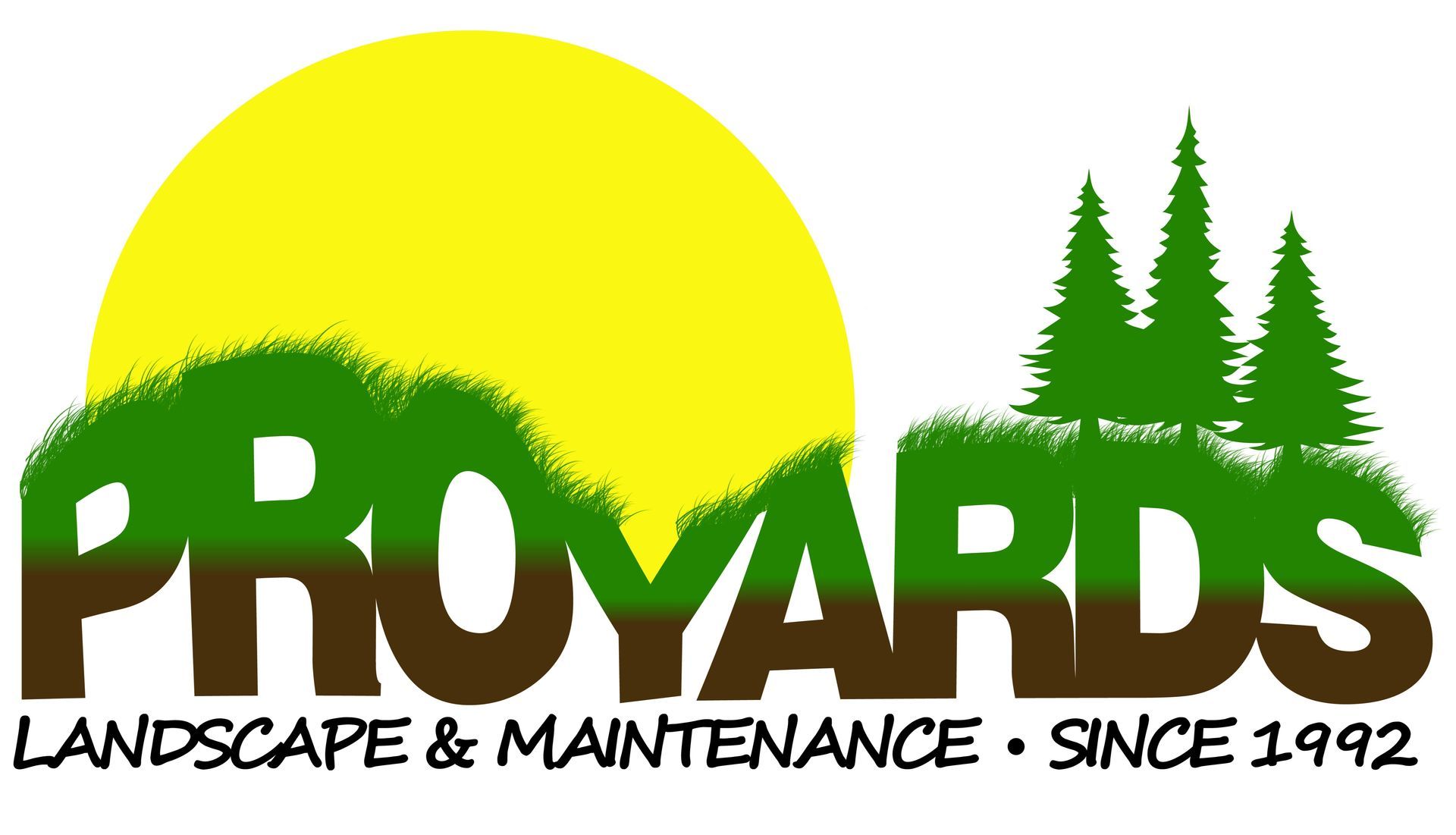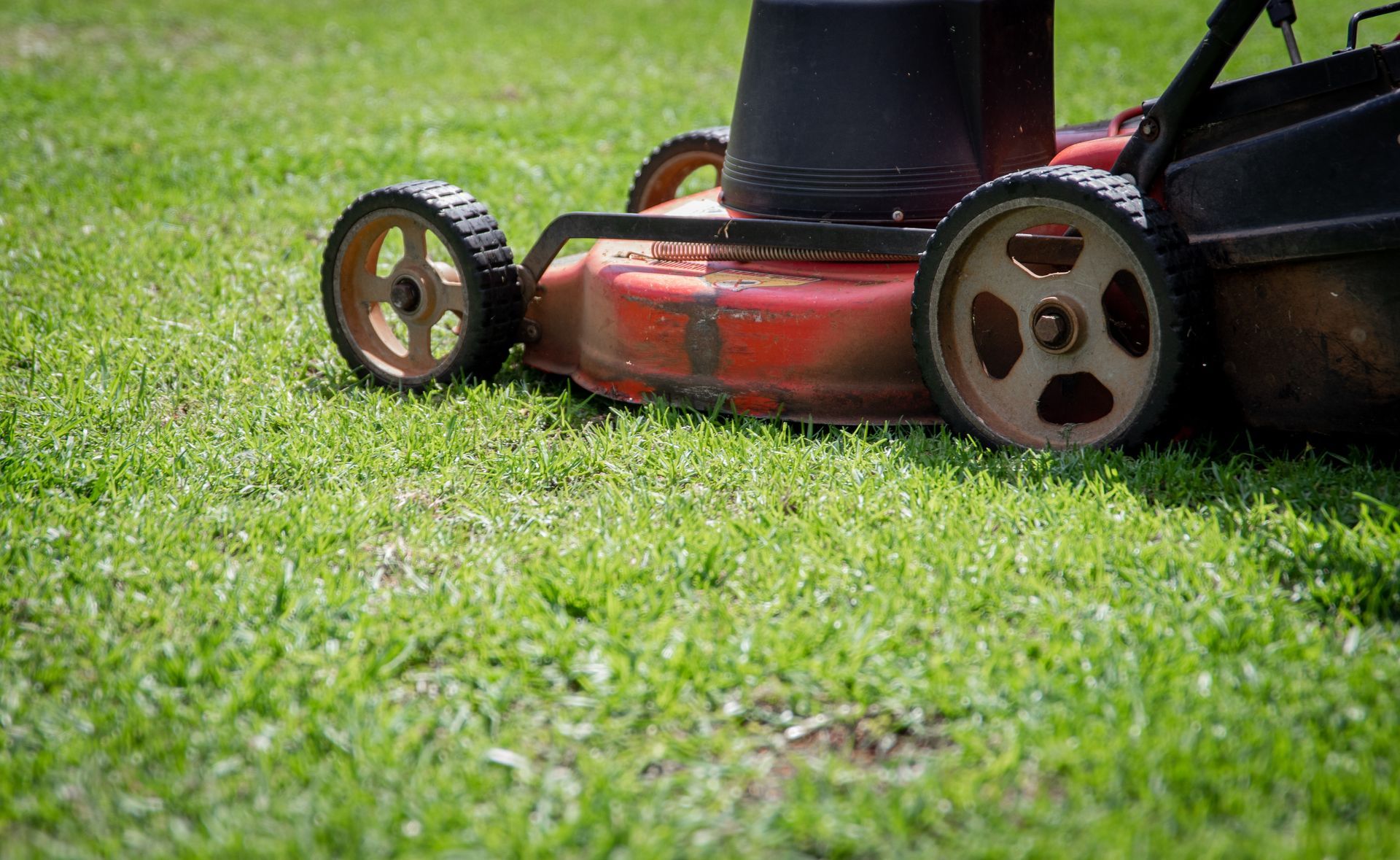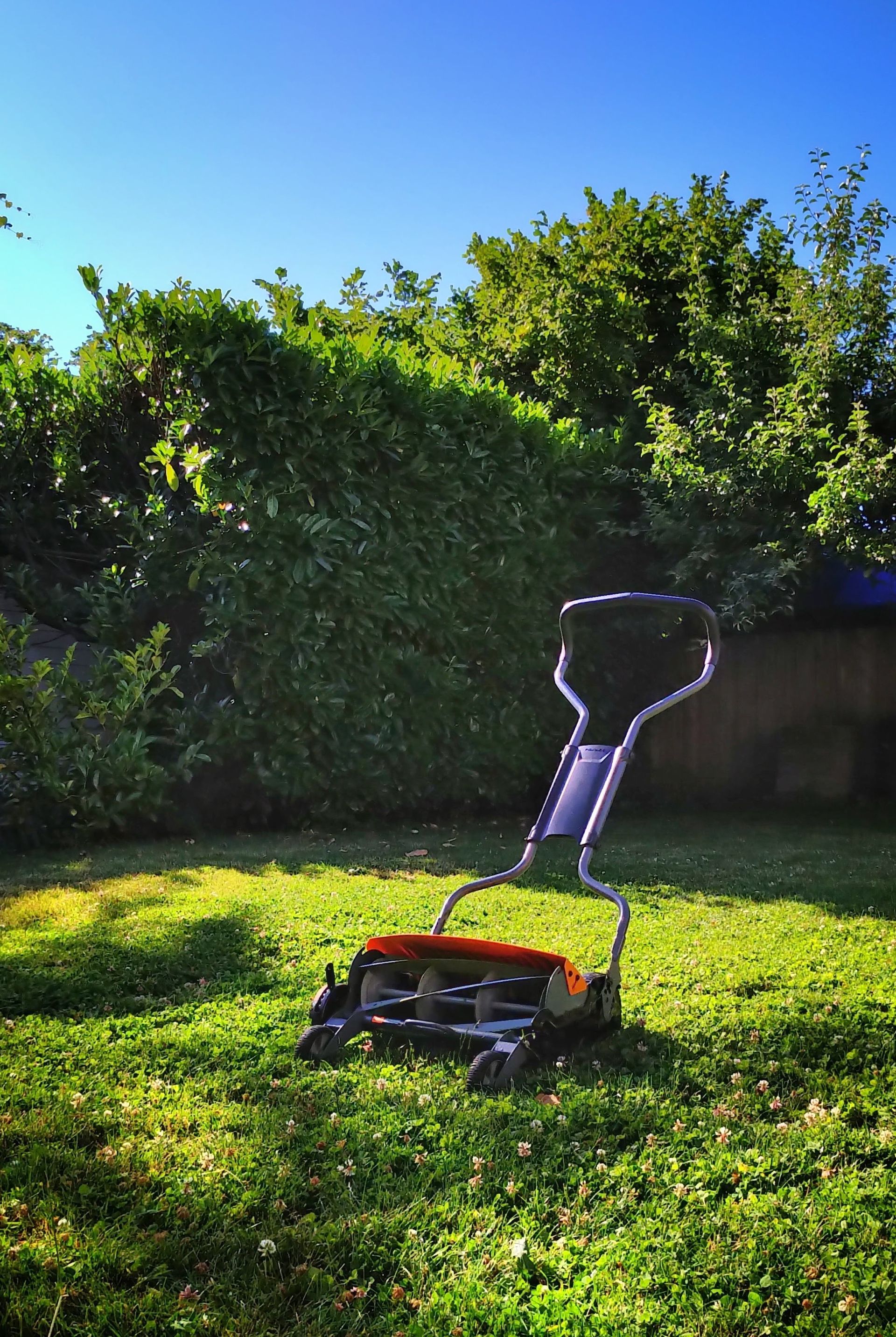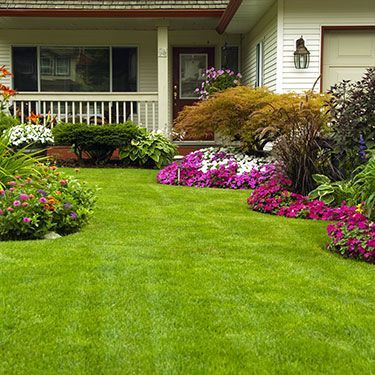Top 8 Lawn Care Tips and Tricks You Need to Know
Welcome to our blog, where we'll unveil the top 8 lawn care tips and tricks you need to know. Whether you're a seasoned green thumb or just starting with your lawn care journey, these expert insights will help you achieve a lush and thriving yard. Let's dive right in and transform your lawn into a verdant masterpiece!
Tip 1: Select Grass Types Suited to Your Utah Climate
Cool-Season Grasses for Colder Areas
In colder regions like Salt Lake City and American Fork, cool-season grasses are your best bet. Varieties such as Kentucky Bluegrass and Perennial Ryegrass excel in these environments. They grow vigorously during the cooler months of spring and fall, offering a rich, green appearance. They also have the resilience to bounce back after the cold winter months.
Warm-Season Grasses for Hotter Regions
For the warmer and drier parts of Utah, such as Saratoga Springs and Lehi, warm-season grasses are more suitable. Types like Bermuda and Zoysia thrive in heat and direct sunlight, making them ideal for these areas. These grasses grow most actively during the summer and tend to turn brown during the cooler months, but they are excellent for conserving water and resisting heat stress.
Understanding Your Local Environment
It's not just the temperature that matters, but also the specific conditions of your property. Consider factors like the amount of sunlight and shade your lawn receives, as some grass types need full sun, while others can tolerate or even prefer partial shade.
Additionally, be mindful of your soil type. Some grasses do well in sandy soil, while others prefer clay. A soil test can provide valuable information about your soil's pH level and nutrient makeup, helping you make an informed decision about which grass type will thrive in your yard.
Selecting the right grass type for your specific Utah climate and soil conditions is the first step toward a healthy, vibrant lawn. It sets the foundation for your lawn care routine, ensuring your efforts are rewarded with a lush, resilient turf.
Tip 2: Test and Improve Your Soil Regularly
Conduct Regular Soil Testing
A soil test provides crucial information about the soil's pH level and nutrient content, which can greatly influence your lawn's health. In Utah, where soil types can range from the sandy soils of Saratoga Springs to the clay-rich soils of Salt Lake City, understanding your specific soil composition is vital. Soil testing kits are readily available at local garden centers or through extension services. Aim to test your soil every 2-3 years, or more frequently if you're noticing problems with your lawn.
Adjust Soil pH
The pH level of your soil determines how well your grass can absorb nutrients. Most grass types prefer a slightly acidic to neutral pH (around 6.0 to 7.0). If your soil is too acidic or too alkaline, it can hinder nutrient uptake, making your lawn more susceptible to disease and stress. Based on your soil test results, you may need to add lime to raise the pH or sulfur to lower it.
Enhance Soil Nutrients
A well-balanced nutrient profile is crucial for robust grass growth. The primary nutrients your lawn needs are nitrogen, phosphorus, and potassium, each playing a unique role in supporting healthy turf. Use your soil test results to guide your fertilization strategy. In some Utah areas, you might find your soil naturally rich in certain nutrients but lacking in others. Tailor your fertilizer application accordingly to ensure your lawn receives a well-rounded diet.
Improve Soil Structure
Good soil structure promotes effective water absorption and root penetration. If your soil is too compacted, aerating your lawn can help. This process involves creating small holes in the soil, allowing air, water, and nutrients to penetrate deeper and reach the roots. For clay-heavy soils common in parts of Utah, incorporating organic matter like compost can improve soil texture and nutrient content.
Regular attention to your lawn's soil health sets a strong foundation for a lush, resilient yard. By understanding and optimizing your soil's pH, nutrient levels, and structure, you're ensuring your lawn has the best possible environment to thrive.
Tip 3: Implement Efficient Watering Practices
Water Deeply but Infrequently
Deep, infrequent watering encourages grass roots to grow deeper, seeking moisture below the surface. This practice makes your lawn more resilient, especially during dry spells. Aim to provide your lawn with about one inch of water per week, either through rainfall or irrigation. This may vary based on temperature and humidity, so adjust as needed.
Best Times to Water
The ideal time to water your lawn is in the early morning. This timing reduces water loss due to evaporation and ensures that the water reaches the roots. Watering in the evening can leave the grass damp overnight, which can lead to fungal diseases. In Utah's hotter areas, like Saratoga Springs, it's particularly important to maximize every drop of water by watering at the optimal time.
Use Smart Irrigation Systems:
Consider investing in a smart irrigation system. These systems adjust watering schedules based on local weather conditions and the specific needs of your lawn, ensuring efficient water use. Smart irrigation can be particularly beneficial in Utah, helping you navigate the local water conservation regulations and reducing your water bill.
Monitor Your Lawn's Response
Keep a close eye on how your lawn responds to your watering routine. Signs of over-watering include soggy soil, thatch build-up, and fungal growth. Symptoms of under-watering are wilting, browning grass, and soil that feels dry to the touch. Adjust your watering practices based on these cues and the current weather conditions.
Efficient watering practices are not just about keeping your lawn green; they're about sustainable resource use, especially in a state like Utah, where water is precious. By watering wisely, you're contributing to water conservation efforts while nurturing a vibrant lawn.
Tip 4: Mow at the Right Height and Frequency
Understand Ideal Mowing Height
Each grass type has an optimal mowing height. For instance, Kentucky Bluegrass, common in cooler Utah areas like Salt Lake City, thrives when kept at about 2.5 to 3 inches tall. On the other hand, warm-season grasses like Bermuda, more suitable for sunnier spots like Lehi, prefer shorter heights. Mowing your grass to its ideal height encourages deep root growth and prevents weeds.
Follow the One-Third Rule
Never remove more than one-third of the grass blade in a single mowing session. Cutting too much at once can stress the grass, making it more susceptible to disease and pests. If your lawn has grown too long, gradually reduce its height over multiple mowing sessions.
Keep Mower Blades Sharp
Dull blades tear the grass, creating jagged edges that not only look unsightly but also make the grass more vulnerable to disease. Sharp blades, on the other hand, make clean cuts and promote healthy growth. Regularly sharpen your mower blades, ideally at the start of the season and then as needed.
Adjust Mowing Frequency with Seasons
Your lawn's growth rate will vary with the seasons. In the fast-growing spring and fall, you might need to mow more frequently, while growth typically slows down in the heat of summer and the chill of winter. Always base your mowing frequency on grass growth rate rather than on a fixed schedule.
Proper mowing practices contribute significantly to the overall health and appearance of your lawn. By mowing at the right height and frequency, keeping your blades sharp, and adapting to your lawn's growth patterns, you're not just cutting grass – you're cultivating a thriving, resilient lawn.
Tip 5: Choose and Apply Fertilizers Wisely
Understand Your Lawn's Nutrient Needs
A soil test is invaluable for determining your lawn's specific nutrient needs. Lawns primarily need nitrogen, phosphorus, and potassium, but the exact ratio can vary based on your soil's existing nutrient levels and your grass type. For instance, soils in Saratoga Springs might be deficient in certain nutrients compared to those in American Fork.
Select the Right Fertilizer
Once you know your lawn's needs, choose a fertilizer that matches. There are various types of fertilizers, including granular and liquid forms, and those that release nutrients slowly over time. Slow-release fertilizers are often preferred because they feed your lawn steadily and reduce the risk of nutrient runoff.
Follow Best Practices for Application
Timing and method of application are crucial. Generally, it's best to fertilize your lawn in the spring and fall when the grass is actively growing. Use a spreader to ensure even distribution and avoid over-fertilizing, which can harm your lawn and the environment. Always water your lawn after fertilizing to help the soil absorb the nutrients.
Consider the Environmental Impact
Be mindful of the environmental impact of fertilization. Excess fertilizer can run off and pollute local waterways. If possible, opt for organic fertilizers, which are less likely to cause pollution and can improve your soil's health over time.
By choosing and applying fertilizers wisely, you're not just feeding your lawn; you're promoting sustainable, long-term health and vitality. With the right approach, fertilization can transform your lawn into a lush, green oasis that's both beautiful and environmentally friendly.
Tip 6: Use Eco-Friendly Weed and Pest Control
Prevention is Key
A thick, healthy lawn is your best defense against weeds and pests. Dense grass leaves little room for weeds to take root and provides a less inviting environment for pests. Regular lawn care practices like proper mowing, watering, and fertilization contribute significantly to preventing these issues.
Identify Weeds and Pests Correctly
Correct identification is crucial for effective control. Different weeds and pests require different approaches. For example, the treatment for dandelions in a Salt Lake City lawn might be different from that for crabgrass in Lehi. Local extension services can provide resources and advice for accurate identification.
Choose Eco-Friendly Treatment Options
Opt for natural or organic treatment options whenever possible. For weeds, consider spot treatments with vinegar-based solutions or manual removal tools that get to the root of the problem. For pests, beneficial insects like ladybugs can control aphid populations naturally, and nematodes can effectively manage grubs without harming your lawn.
Apply Treatments Carefully
If you need to use chemical treatments, apply them carefully and according to the manufacturer's instructions. Targeted application to affected areas is usually more effective and less harmful than blanket application. Always consider the potential impact on nearby plants and wildlife.
By adopting eco-friendly weed and pest control methods, you're not just keeping your lawn healthy; you're also contributing to the health of your local ecosystem. Responsible practices ensure that your lawn remains a safe and beautiful space for everyone to enjoy.
Tip 7: Regularly Aerate and Dethatch Your Lawn
Understand the Benefits of Aeration
Aeration involves making small holes in the soil, allowing air, water, and nutrients to penetrate down to the grass roots. This process helps alleviate soil compaction, which can be common in high-traffic areas or in clay-heavy soils like those found in parts of Salt Lake City. Aeration encourages deeper root growth, resulting in a more robust and drought-resistant lawn.
Know When to Aerate
The best time to aerate your lawn is during its peak growing period. For cool-season grasses, this is typically in the early spring or fall. For warm-season grasses, late spring through early summer is ideal. Aerating during these times ensures that your grass can recover quickly and take full advantage of the increased access to essential nutrients and water.
Recognize the Need for Dethatching
Thatch is a layer of dead grass and roots that accumulates on the soil surface. A thin layer of thatch is normal and can even be beneficial, but too much can prevent water, air, and nutrients from reaching the soil. If the thatch layer is thicker than half an inch, it's time to consider dethatching. This process can be done manually with a thatching rake or with a power dethatcher for larger lawns.
Aerate and Dethatch Responsibly
While aeration and dethatching offer significant benefits, it's important to do them responsibly. Over-aeration or dethatching can stress your lawn. After these treatments, give your lawn extra care, such as additional watering and temporary avoidance of heavy use, to help it recover and thrive.
By regularly aerating and dethatching your lawn, you're promoting a healthier, more vigorous growth. These practices, especially when done with care and at the right times, can transform your lawn into a vibrant, resilient space that's a true asset to your home.
Tip 8: Adapt Your Lawn Care With the Seasons
Spring: A Time for Growth and Renewal
Spring is a critical time for lawn care. Start by cleaning up debris and leaves. Test your soil and apply the needed fertilizers to give your grass a nutrient boost. It's also the perfect time to overseed any bare patches and start your regular mowing routine, setting your mower to the higher end of the recommended height for your grass type.
Summer: Focus on Maintenance and Watering
Summer demands special attention, especially in the hotter parts of Utah. Keep your mowing consistent but adjust the height to leave grass a bit longer, providing shade and moisture retention for the soil. Watering is crucial during this time; ensure you're doing it deeply and infrequently, preferably in the early morning, to minimize evaporation and maximize absorption.
Fall: Prepare for Winter
In fall, aerate your lawn to relieve any compaction from summer use and overseed if necessary. Continue to mow and water as needed, but start to reduce the frequency as the temperature drops. Apply a fall fertilizer to prepare your lawn for the cold months ahead, providing the nutrients it needs to survive the winter.
Winter: Rest and Recovery
Winter is a time for your lawn to rest. Minimize foot traffic on your grass to prevent damage to the dormant blades. If you're in an area with snowfall, like Eagle Mountain, avoid piling snow on your lawn as it melts, as this can lead to flooding and damage when spring arrives.
Adapting your lawn care with the seasons ensures your lawn stays healthy and resilient throughout the year. Each season has its own set of tasks and considerations, and by staying proactive, you can keep your lawn looking its best, no matter the weather.
And there you have it, eight essential tips for maintaining a lush, vibrant lawn in Utah. Remember, local experts like
Proyards
are always available to provide tailored advice and services, from landscaping to irrigation, ensuring your lawn is not just surviving but thriving. Ready to transform your outdoor space? They're just a call away.
Conclusion: Cultivating Your Perfect Utah Lawn
Embarking on the journey of lawn care is a rewarding endeavor. It's about more than just maintaining a green space; it's about creating a vibrant, healthy extension of your home that you and your family can enjoy. By following these eight essential tips, you're well on your way to cultivating a lawn that not only thrives in Utah's unique climate but also enhances the beauty and value of your property.
Select Grass Types Suited to Your Utah Climate
Match your grass type to your local conditions for a resilient, thriving lawn.
Test and Improve Your Soil Regularly
Healthy soil is the foundation of a healthy lawn. Regular testing and improvement keep it in top condition.
Implement Efficient Watering Practices
Water wisely to promote deep roots and a drought-resistant lawn.
Mow at the Right Height and Frequency
Proper mowing encourages strong, healthy grass.
Choose and Apply Fertilizers Wisely
The right fertilizer at the right time can make all the difference.
Use Eco-Friendly Weed and Pest Control
Keep your lawn healthy and safe with environmentally friendly treatments.
Regularly Aerate and Dethatch Your Lawn
These practices ensure your soil and grass get the air and nutrients they need.
Adapt Your Lawn Care With the Seasons
Tailor your lawn care routine to the changing needs of each season for year-round beauty.
Remember, while these tips provide a solid foundation, every lawn is unique. Don't hesitate to seek local expertise for personalized advice. In Utah, companies like Proyards, with their deep understanding of the region's specific lawn care needs, offer a range of services from landscaping and fertilization to irrigation and tree service. Whether you're in Salt Lake City, Lehi, Saratoga Springs, Eagle Mountain, or American Fork, professional help is just a call away.
Lawn care is a journey, and with the right approach and a little help from the experts, your lawn can become a lush, inviting space that reflects your care and commitment. Happy gardening!
Our Services
Contact Information
Phone: (801) 254-2890
Email: proyardcustomers@gmail.com
Business Hours
- Mon - Fri
- -
- Sat - Sun
- Closed
Area We Serve
All Rights Reserved | Proyards










